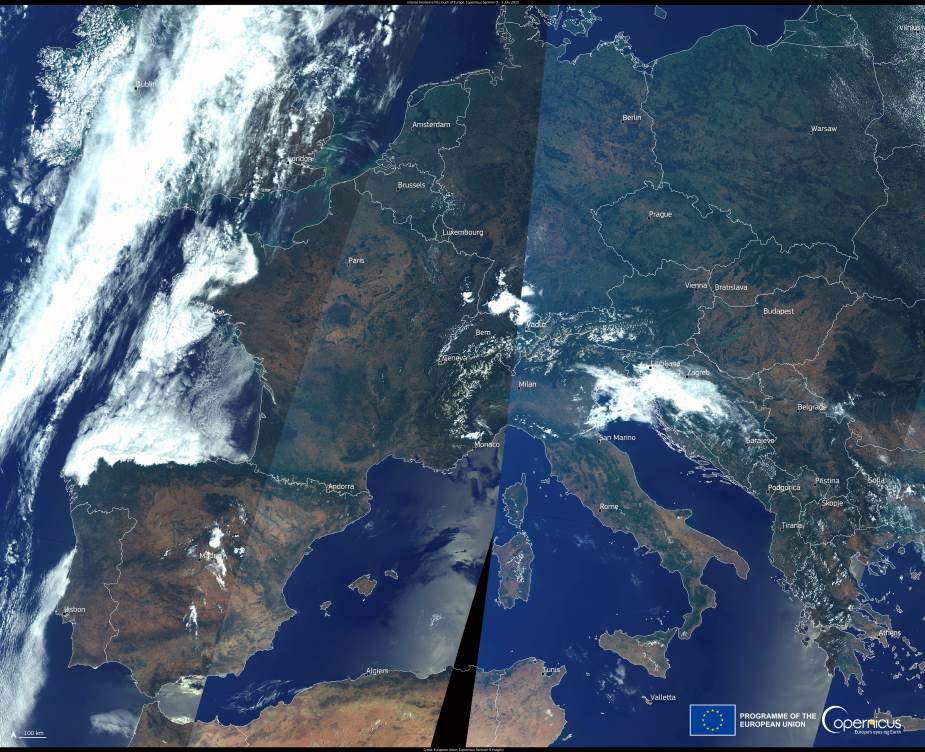Large swathes of Europe are experiencing extreme heat as a prolonged heatwave sweeps across the continent, bringing record-breaking temperatures, school closures, and rising health risks. In Italy, two heat-related fatalities have been reported, while French authorities raised the national alert level, closing over 1,300 schools in the most affected regions.
The Copernicus Sentinel-3 satellite captured this view of central and western Europe on 1 July 2025. The clear skies visible across much of the continent reflect the presence of a persistent high-pressure system — a pattern commonly linked to extended periods of hot, dry weather.

Temperatures in parts of Spain and Portugal have surpassed 46 °C, marking some of the highest June readings on record. Similar extremes have occurred across France, Germany, and the UK, where national meteorological services have warned of serious health consequences, particularly for older adults, young children, and people with pre-existing conditions. In multiple countries, emergency services reported increased calls for heatstroke and dehydration.
According to the Copernicus Emergency Management Service, fire risk remains very high across Mediterranean regions, where dry vegetation and wind have already fueled wildfires. Over the weekend, blazes broke out in parts of southern Italy, Greece, and coastal Spain. As noted by the European Forest Fire Information System (EFFIS), this early fire activity is consistent with recent trends of longer and more intense fire seasons.
In response to the intensifying conditions, several EU cities have opened temporary cooling centers and climate shelters. Officials in Madrid, Paris, and Milan have expanded public access to air-conditioned spaces and distributed water in parks and transportation hubs. According to the European Environment Agency, such adaptation strategies are becoming increasingly important as heatwaves become more frequent and severe.
Copernicus satellite data helps track the evolution of such events, providing timely information to support planning and emergency response efforts throughout Europe.
Featured image credit: European Union, Copernicus Sentinel-3 imagery



